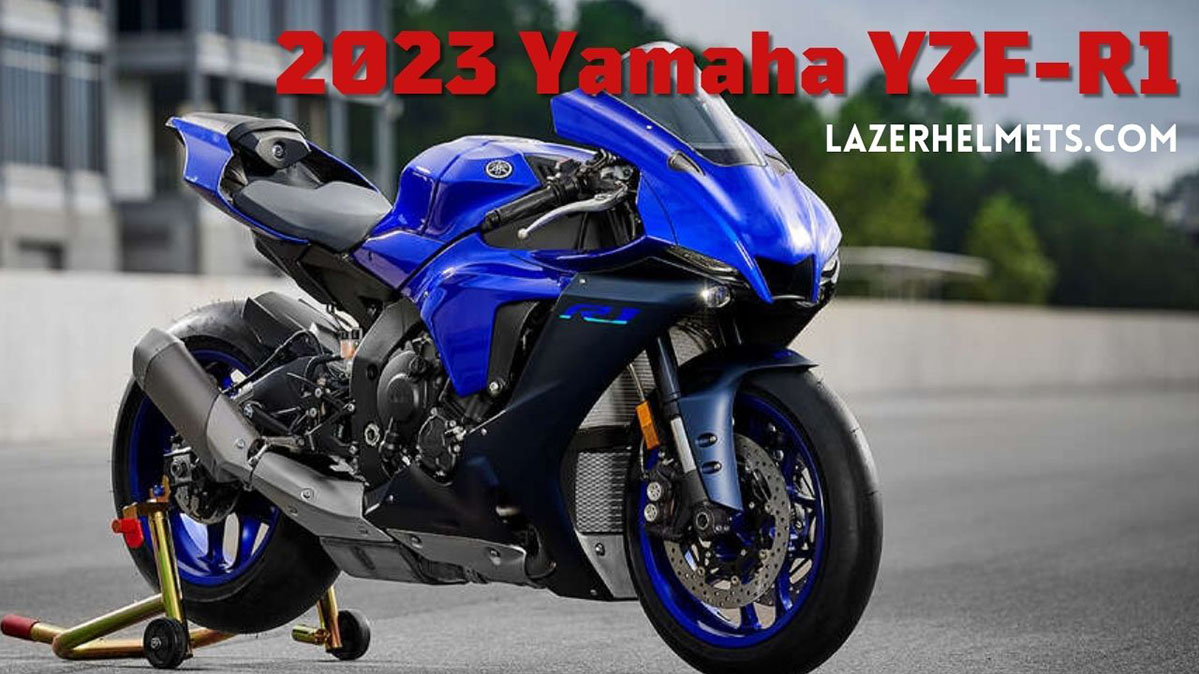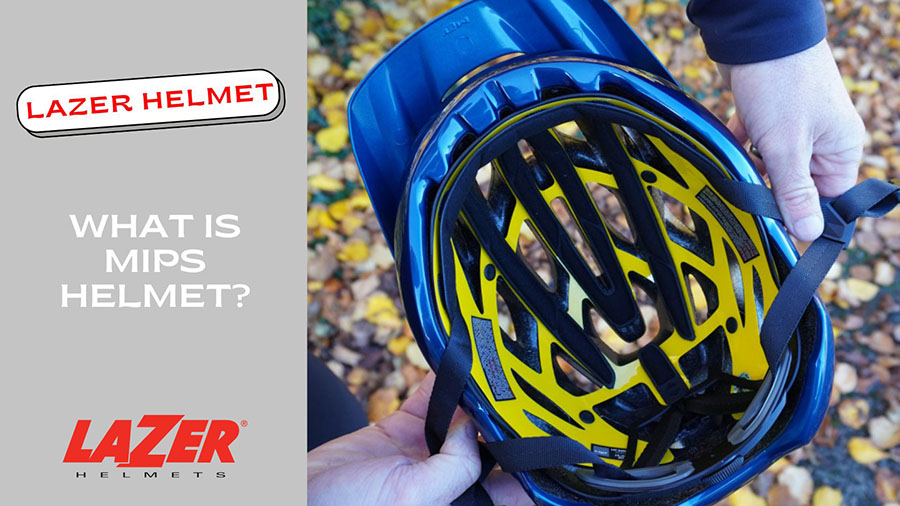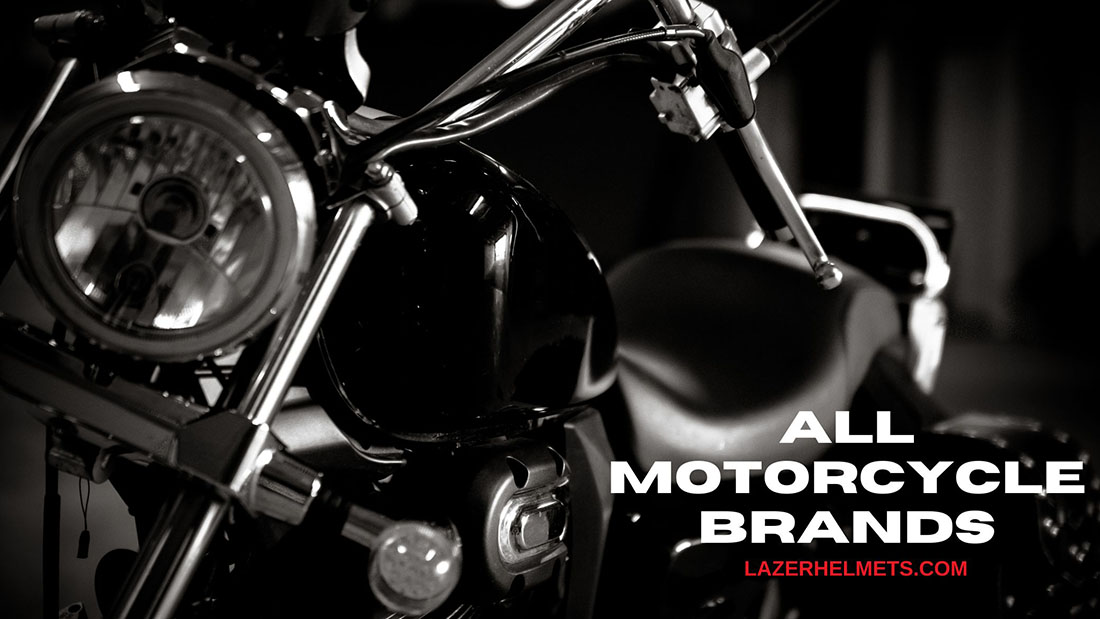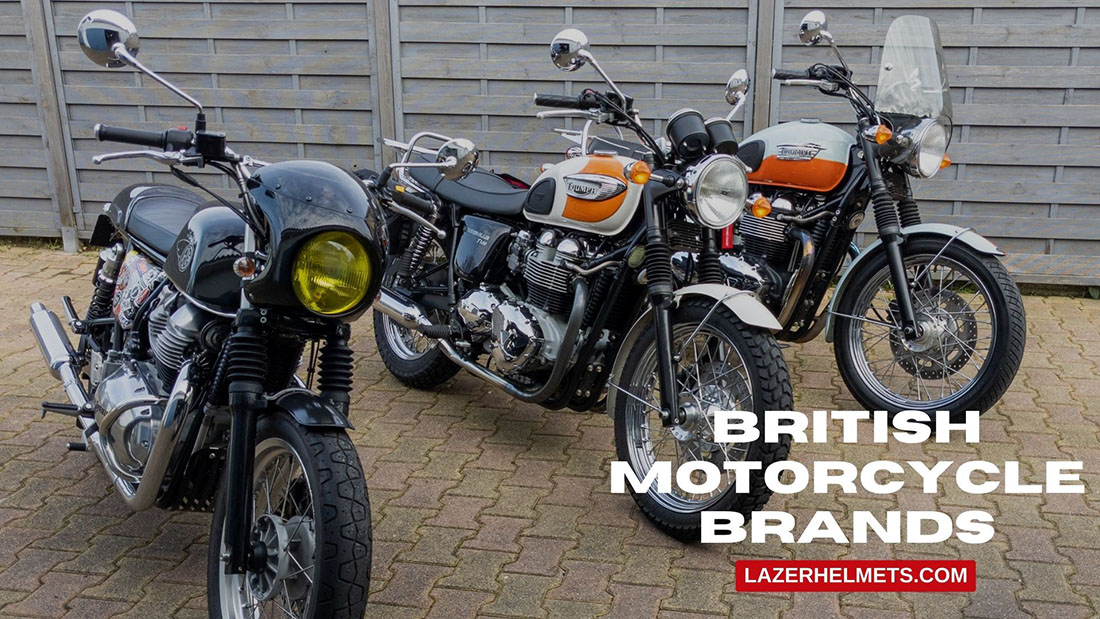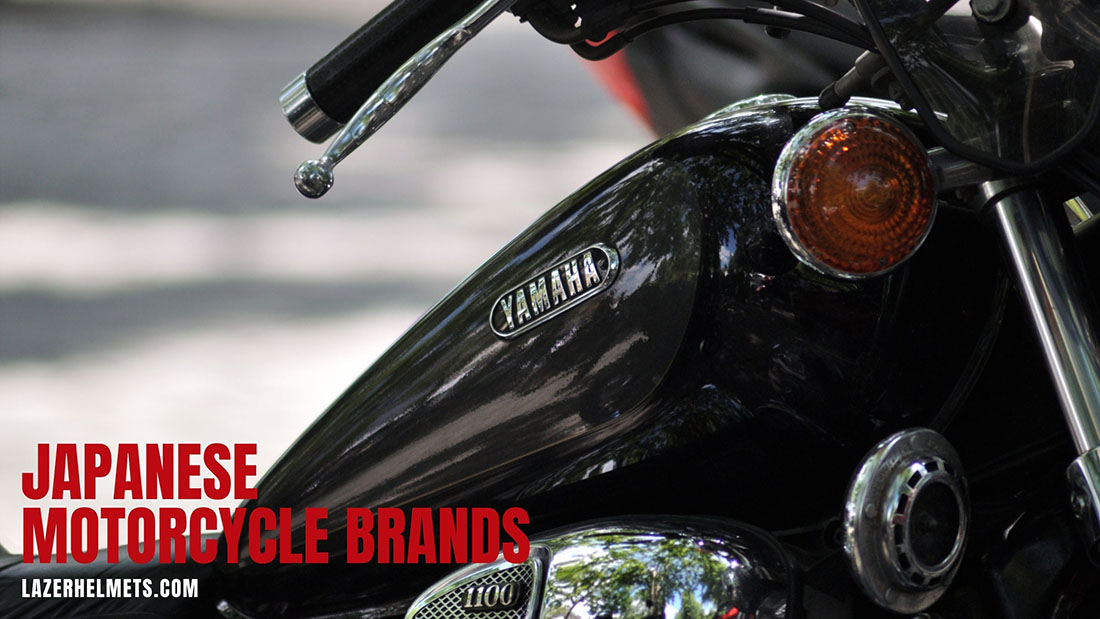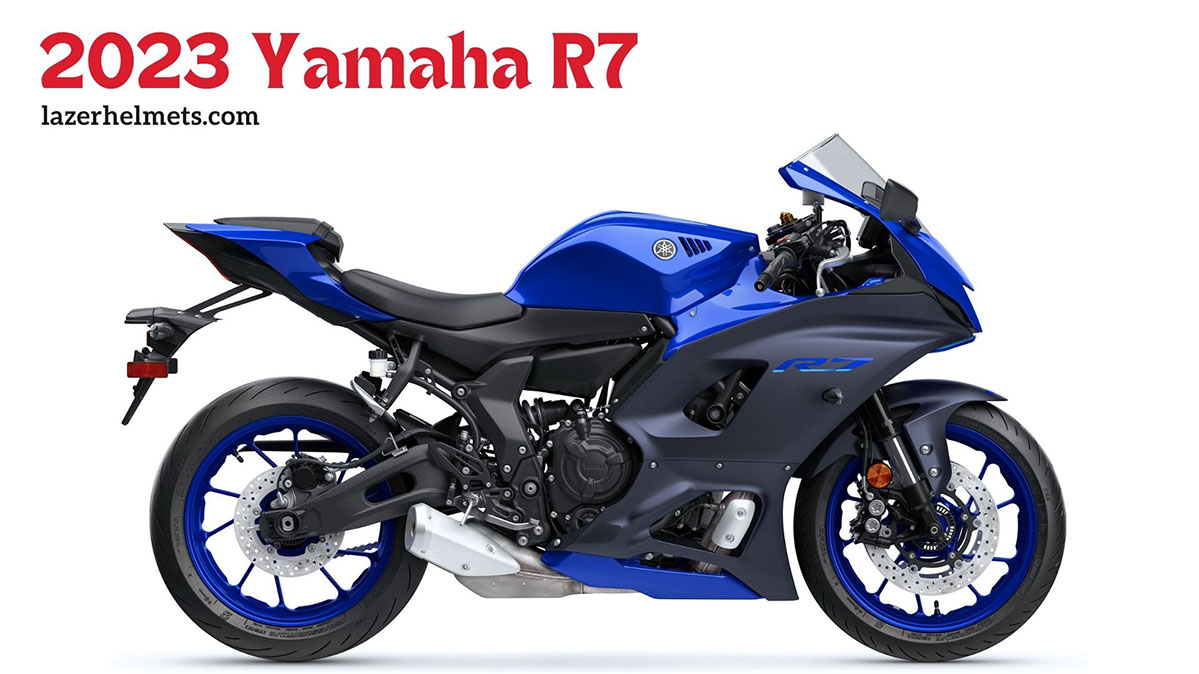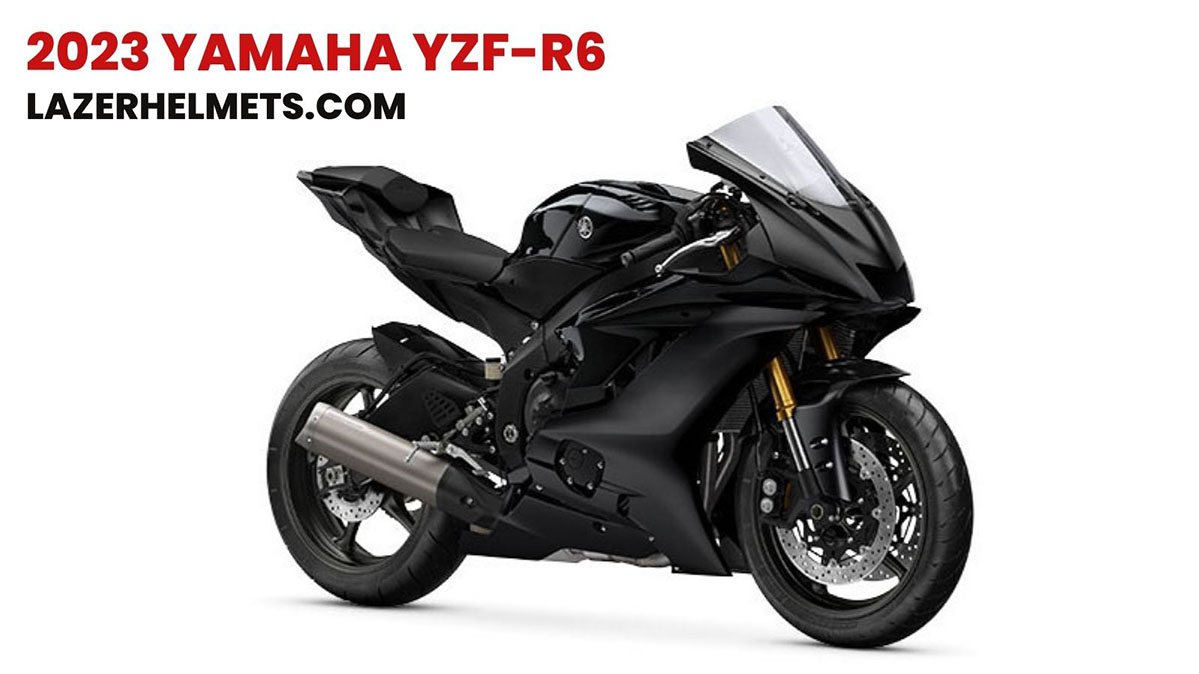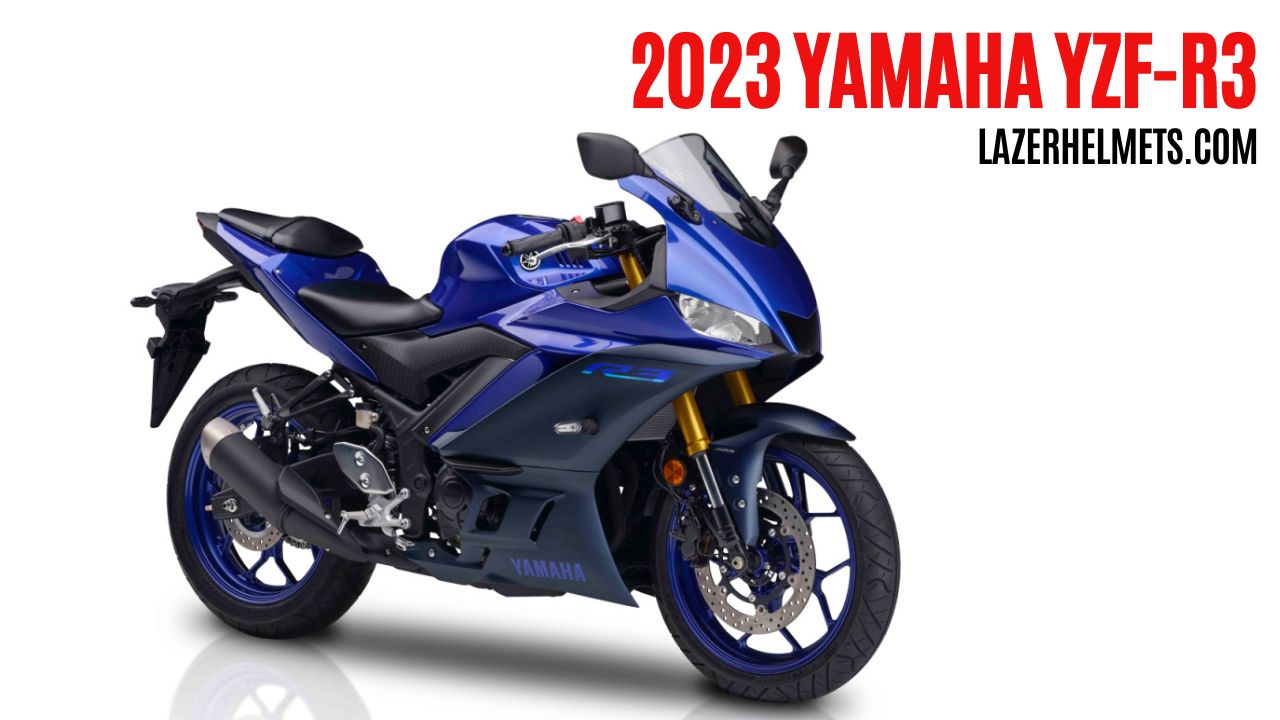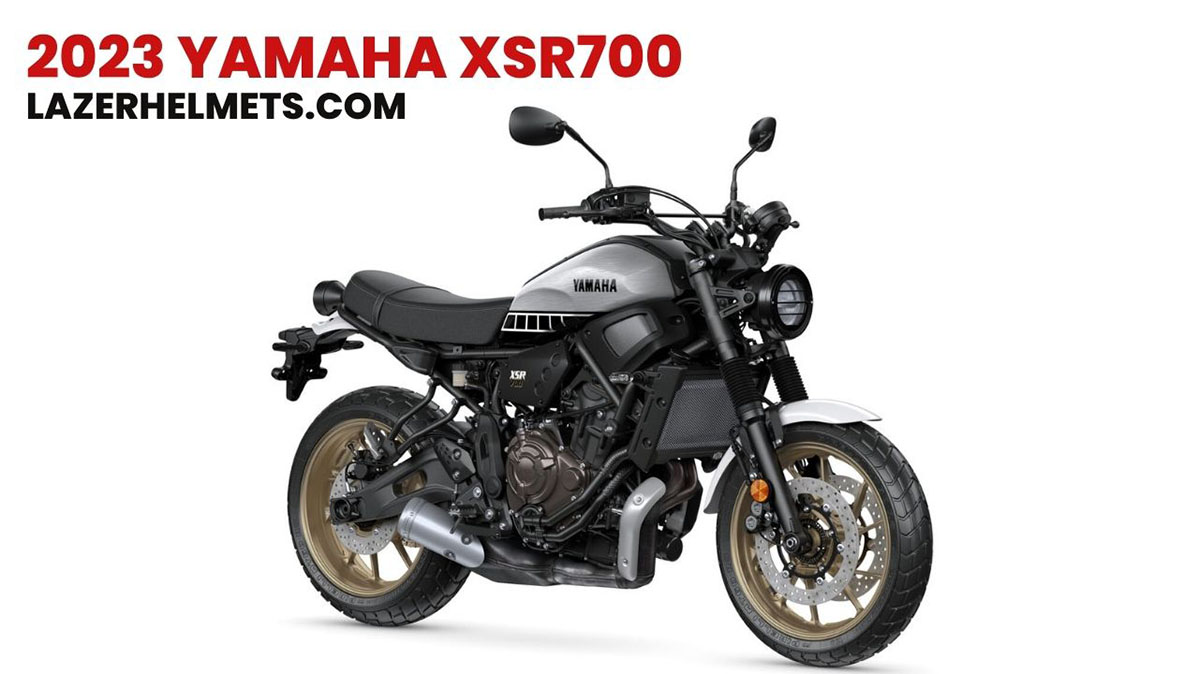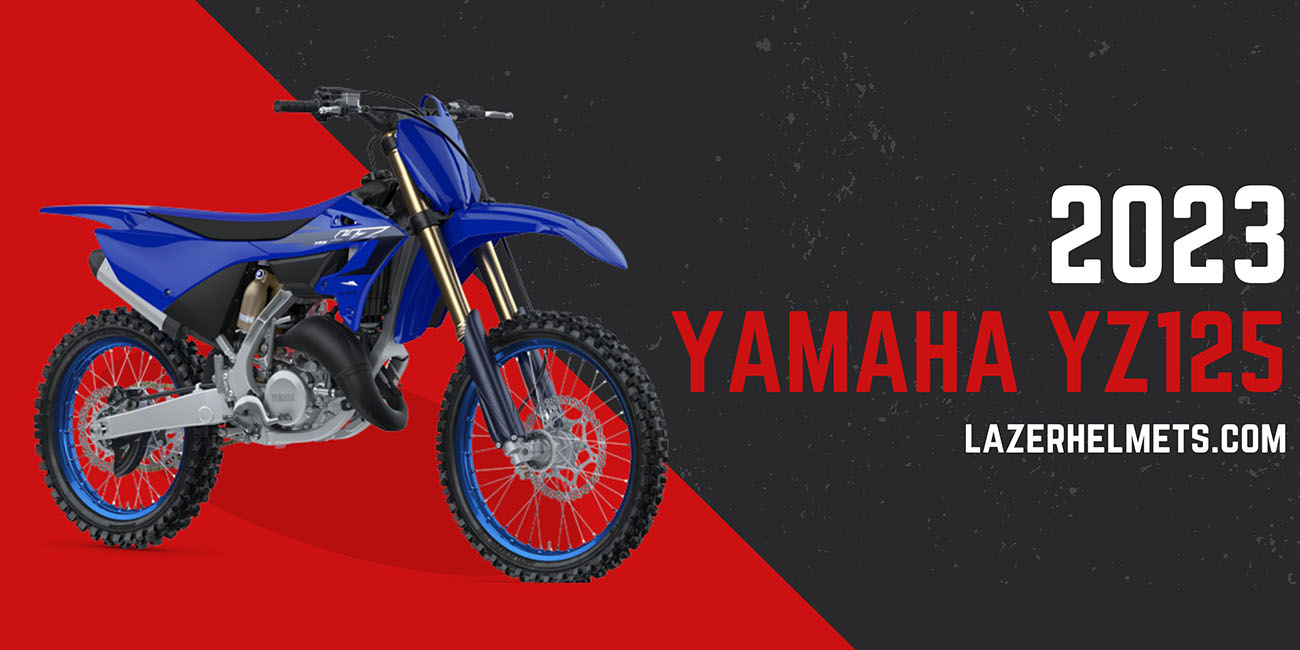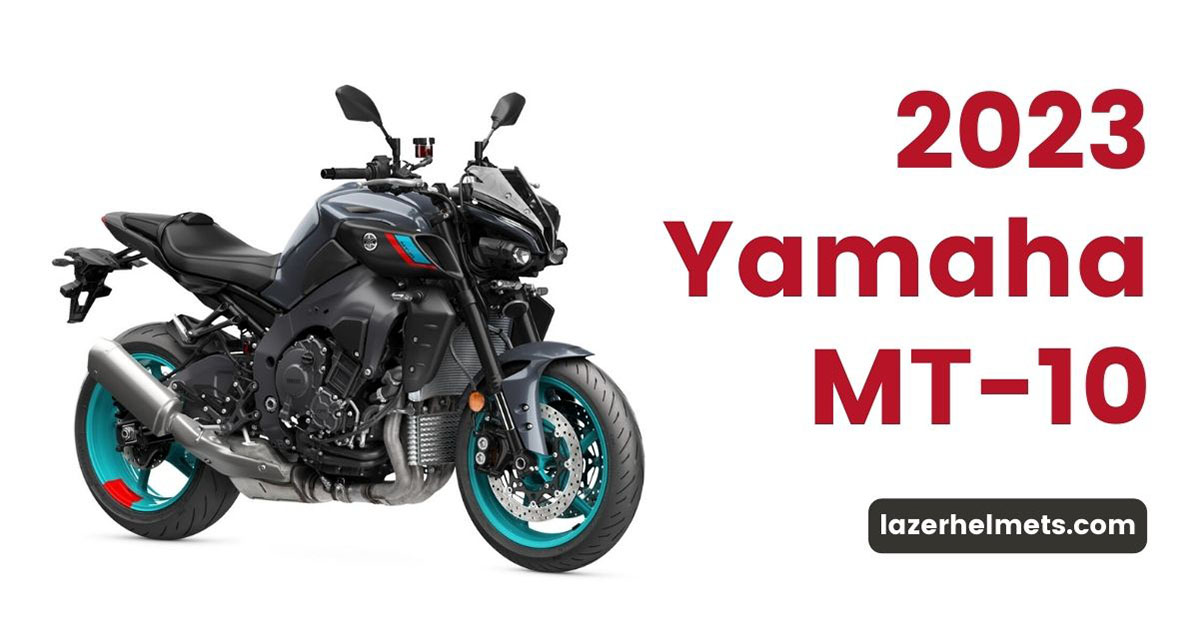In This Article:
It’s a pleasant surprise to learn that R1’s new, stylish lines are directly inspired by Yamaha’s YZR-M1 MotoGP. There are so many refreshing upgrades that no R1 enthusiasts should skim over!
For one, our YZF-R1 bike has shorter wheelbases now (about 1405mm, 10 mm lesser than previous versions) and weighs approximately 448 pounds. The premium Deltabox subframe and main frame (made of aluminum) and lightweight magnesium wheels (10-spoke, 17-inch) reduce the bike’s total load by several pounds.
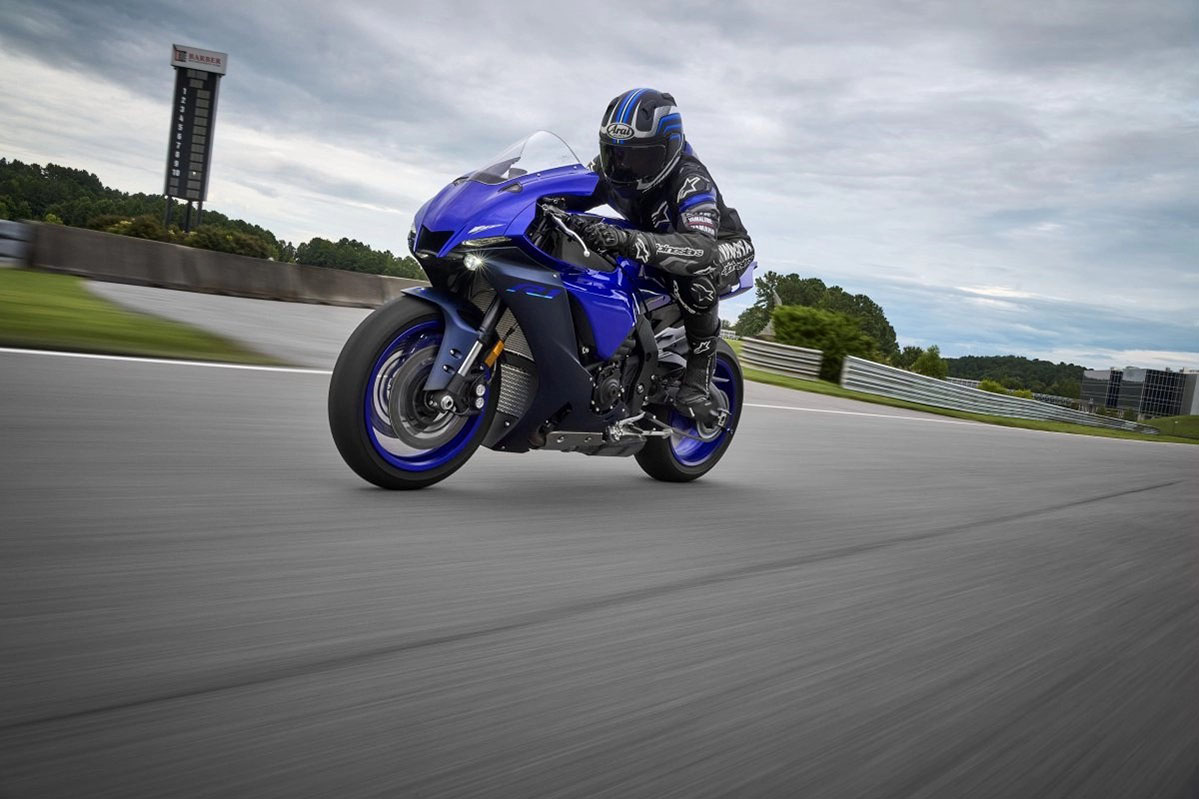
The most notable change lies in its new front fairings, with extended cuts from the windscreen top to the headlight’s inside edges surrounding the intake volume. R1 also introduces high-performance, large LED dual lights on both sides, supported by large air scoops to lend the race bike a more attractive and impressive look.
Yamaha’s new design strokes did not stop there: the integrated bodywork continues to spread further to the plastic light and lower cowl – another inspiration from MotoGP. Here, the brand incorporates an instrumental TFT-LCD panel to showcase all necessary parameter capabilities, such as:
- Odometer/ Tachometer for ultimate connection
- Vehicle and throttle cable status
- Fuel level/ fuel injection
- Trip
Better yet, R1 comes fully armed with CrossPlane, inline-four-cylinder engines (lighter than previous models) to offer stability and balance. Added by a more compact hydraulic disc brake system (320 mm for front and 220 mm rear), its aerodynamic profile and acceleration increased by approximately 5.3%.
Even the tires receive some attention; to improve the overall riding experience, Yamaha staff incorporates RS11 Bridgestone Battlax that measures 190/55 (rear) and 120/70 (front), slightly bigger than other year models. Your abdomen is hugged snugly by a 17L tank, made of aluminum material to lend a more muscular impression.
Lastly, R1’s new upgrades include inverted forks and a brand-new exhaust system (4-2-1, controlled by exhaust valves) that passed Euro5 emission tests with flying colors. Their ability to adjust airflow is warmly welcomed, performing incredibly well at performance/power enhancements.
2023 Yamaha YZF-R1 Key Specs
- Make: Yamaha
- Model Year: 2023
- Type: Super Sports bike
- Color: World GP 60th Anniversary Edition, Yamaha Racing Blue, Performance Black
- MSRP Price: $17,999
- Warranty: 1 Year
- Warranty Plus: 24 or 36 months (Yamaha Extended Service)
- Engine: 998cc
- Power: 197.2 HP
- Mileage: 32.46 mpg
- Transmission: 6-speed
- Fuel Tank Capacity: 17 l (3.7 gal.)
- Seat Height: 855 mm (33.7 in.)
- Curb Weight: 201 kg (443 lb.)
2023 Yamaha YZF-R1 Specifications
Engine
| Engine type | Liquid-cooled, DOHC, 16-valves (4-valves / cyl), in-line four |
| Displacement | 998 cc |
| Power | 197.2 horsepower |
| Bore x stroke | 79 x 50.9 mm |
| Compression ratio | 13:1 |
| Maximum Torque | 11.5 kg-m (83.2 ft-lb.) @ 11,500 rpm |
| Lubrication system | Wet sump |
| Engine Management | YCC-T, YCC-I, PWR, TCS, LCS, LIF, SCS, QSS, BRM, BC, CCU & SCU |
| Ignition system | TCI |
| Starter system | Electric |
| Transmission system | 6-speed |
| Final transmission | 520 series O-ring chain |
| Fuel Delivery | Mikuni 45 mm throttle body FI with twin injectors (primary & secondary) |
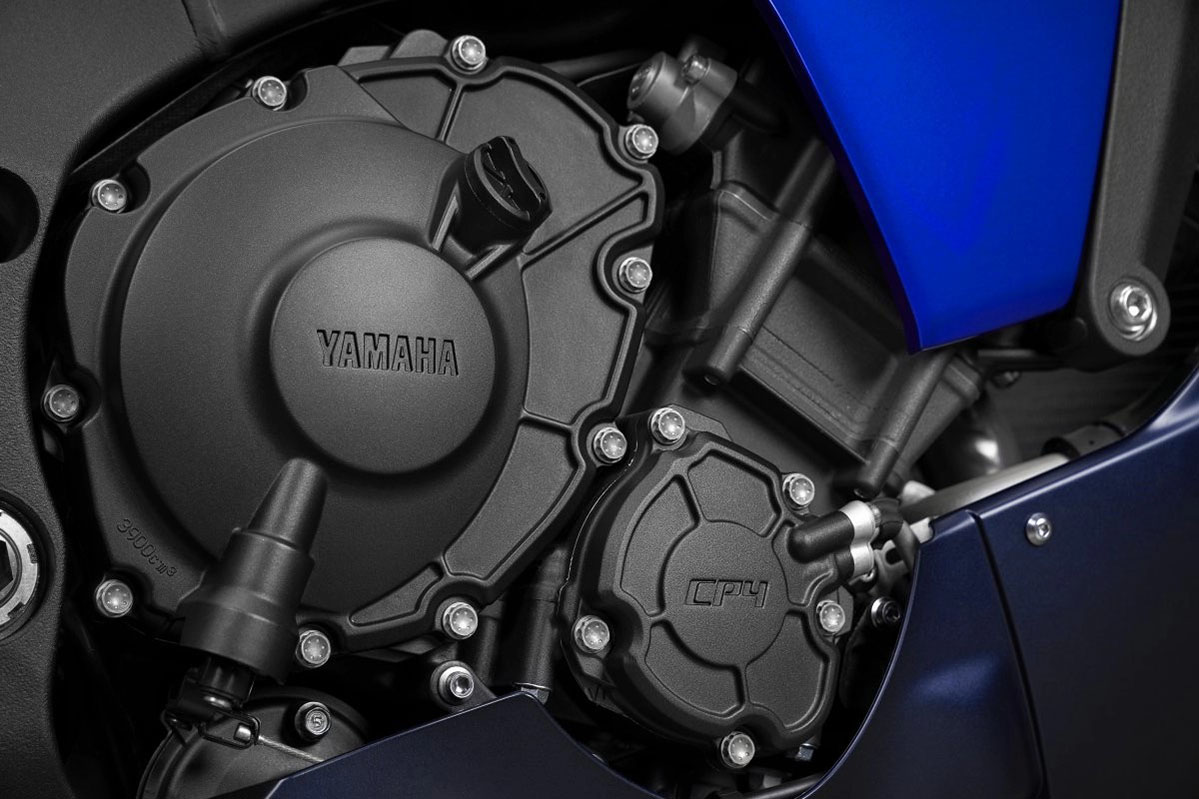
Chassis
| Front suspension system | Fully adj. 43 mm inverted fork / 120 mm (4.7″) wheel travel |
| Rear suspension system | Fully adj. bottom link Monocross / 120 mm (4.7″) wheel travel |
| Front brake | Dual 320 mm discs / radial mount, 4-piston calipers / ABS & UBS-equipped |
| Rear brake | 220 mm disc / single piston caliper / ABS |
| Front tire | 120/70ZR17 |
| Rear tire | 190/55ZR17 |
Dimensions
| Rake / Trail | 24° / 102 mm |
| Overall length | 2,055 mm (80.9 in.) |
| Overall width | 690 mm (27.2 in.) |
| Overall height | 1,150 mm (45.3 in.) |
| Seat height | 855 mm (33.7 in.) |
| Wheelbase | 1,405 mm (55.3 in.) |
| Ground clearance | 130 mm (5.1 in.) |
| Wet Weight | 201 kg (443 lb.) |
| Fuel tank capacity | 17 l (3.7 gal.) |
Competitors
| Model | Price | Engine | Top Speed |
|---|---|---|---|
| 2023 Kawasaki Ninja ZX-10R | $21,899 (SE) – $29,699 (RR) | 998cc | 186 mph |
| 2023 BMW S1000RR | $17,895 (Base) | 999cc | 188 mph |
| 2023 Honda CBR1000R | $16,499 (ABS) – $28,500 (SP) | 999cc | 186 mph |
2023 Yamaha YZF-R1 Features
ADDITIONAL FEATURES
All-LED Lighting
LED headlights are both lightweight and compact, allowing for a more streamlined design of the front cowling with excellent visibility. The lights deliver a broad spread of illumination. LED front turn signals are integrated into the mirrors for improved aerodynamics while the LED tail light is stylish and highly visible.
Full-Color Instruments
The R1 features a brilliant full-color, thin-film transistor (TFT) meter, with front brake pressure and fore/aft G-force readouts which give the rider feedback from the machine. It features both street mode and a track mode that focuses on performance information, such as YRC settings (including EBM and BC systems), a zoomed-in view of the tachometer in the upper rpm range, a lap timer, gear position indicator and speed.
Sleek Styling
The YZF-R1 features beautifully integrated bodywork and sleek, stylish lines which create an unmistakably aggressive, aerodynamic profile.
CHASSIS/SUSPENSION
Aluminum Fuel Tank
The aluminum alloy fuel tank weighs in at a full 3.5 pounds less than a comparable steel tank, further reducing overall weight, and is sculpted to give the rider a natural lower body connection to the machine.
Brake Control (BC) System with ABS
Developed on racetracks around the world, Yamaha’s Brake Control (BC) System works with an Anti-lock Braking System (ABS) to minimize brake slip under aggressive braking or on less than ideal surfaces. The adjustable BC System uses the IMU to provide progressive brake force intervention as lean angle increases which boosts rider confidence when braking mid-corner.
Bridgestone® RS11 Tires
The R1 mounts the latest Bridgestone® RS11 tires which are designed to offer true racetrack-ready traction with balanced road feel and handling.
Compact Deltabox Frame
The slim aluminum Deltabox frame, magnesium subframe and aluminum swingarm contribute to a compact chassis design with outstanding track-focused handling. The motor mounts use the engine as a stressed member of the frame for optimal rigidity balance and fantastic cornering performance on the race track.
Fully Adjustable KYB® Fork
The R1 features an inverted KYB® front fork with 43mm inner tubes and a 4.7 inch stroke with full adjustability for incredible front-end feel on the track. The shim-stack damping pistons improve road feel under aggressive conditions. All adjustments are also made on the top of the fork legs for simplified tuning.
Linkage-Type KYB® Shock
The fully adjustable KYB® shock utilizes a rear bottom link pivot position that is optimally placed to provide exceptional handling and excellent transmission of engine torque to the track surface. Internal settings are also revised to match the upgraded front fork.
Race-Ready Magnesium Wheels
The 10-spoke cast magnesium wheels significantly lower rotational mass compared to conventional aluminum cast alloy rims, reducing unsprung weight for quicker direction changes and responsive handling.
Supersport Braking Components
The YZF-R1 features 4-piston radial-mounted front calipers riding on big 320mm rotors for excellent stopping power, with a high-friction pad compound, and supported by a 220mm rear disc with compact floating caliper. The ABS hydraulic unit is light and compact, and the high-quality braided stainless steel front lines provide firm yet responsive control and feel.
ELECTRONICS
Engine Brake Management (EBM)
The YZF-R1 features an Engine Brake Management (EBM) system that allows the rider to adjust engine braking to suit personal preferences and track conditions. The EBM system offers three levels of engine brake force to allow smoother corner entry.
Launch Control System (LCS)
Built to deliver an optimum racetrack start every time, the R1’s Launch Control System (LCS) limits maximum engine rpm and throttle plate opening with input from the TCS and LIF systems to maximize acceleration from a standing start. The LCS offers three setting levels to adjust engine control and output.
Lean Angle-Sensitive Traction Control System (TCS)
The R1’s Traction Control System (TCS) calculates the differences in front and rear wheel speeds to monitor and reduce unwanted wheel spin during hard acceleration. Unlike many simplified TC systems, the R1 also uses the IMU to calculate lean angle, then adjusts the amount of TCS intervention to best suit the rider’s demands. The TCS offers ten separate settings enabling the rider to dial in the exact level of control needed.
Lift Control System (LIF)
The Lift Control System (LIF) utilizes the IMU to detect when the motorcycle’s nose pitches upwards higher or faster than desired, then progressively regulates engine power to maintain chassis attitude with minimal loss of forward drive. LIF offers four settings of adjustment for fine tuning
MotoGP®-Developed Slide Control System (SCS)
Yamaha’s Slide Control System (SCS) comes directly from the Yamaha YZR-M1 MotoGP® race bike. By using the IMU to detect lateral slides under hard cornering acceleration, the ECU intervenes to regulate power delivery and seamlessly control the motorcycle’s cornering attitude. The SCS features four settings to suit rider preferences and track conditions.
MotoGP®-Level Controllability
Yamaha’s Inertial Measurement Unit (IMU) combines a gyro sensor and G-sensor accelerometer that measures all six axes of movement in 3-D space at a rate of 125 calculations per second. This information is fed into the Engine Control Unit (ECU) to create a detailed picture of the motorcycle’s position, which then powers the R1’s rider-assisting technology package, Yamaha Ride Control (YRC).
Power Delivery Mode (PWR)
Power Delivery Mode (PWR) lets the rider adjust engine response to best match their preferences and riding conditions, adjusting throttle feel, responsiveness and overall power. The PWR system offers four settings of progressive power delivery.
Ride-by-Wire Throttle System
The R1 features a ride-by-wire Yamaha Chip Controlled Throttle (YCC-T®) system built around the Accelerator Position Sensor with Grip (APSG), which eliminates the throttle cables. As before, YCC-T precisely senses throttle input by the rider and actuates the throttle valves to actively control intake volume, allowing for cutting-edge computerized engine management but in a lighter package.
Up & Down Quick Shift System (QSS)
The Up & Down Quick Shift System (QSS) uses a sensor on the shift linkage to modulate power during shifting, allowing for split-second clutchless shifts up and down through the gearbox. Full-throttle upshifts maximize forward drive under power, while the ECU precisely matches engine speed while downshifting for nearly instantaneous gear changes with minimal chassis disruption. The QSS can be adjusted between three settings with independent downshift function control.
Variable Intake System
The YZF-R1 features Yamaha’s Chip Controlled Intake (YCC-I®), a variable intake system that broadens the spread of power across the entire rpm range. By actively adjusting the length of the intake based on engine speed, the CP4 engine is able to provide a broad spread of power across the rpm range.
ENGINE
Advanced Clutch
Yamaha’s assist and slipper clutch is used to give the rider more confident downshifts when entering corners aggressively, while still smoothly handling the torque of the R1’s high-output motor.
Compact Stacked Transmission
A 6-speed transmission features close-ratio gearing to best match the high-revving engine. The transmission also “stacks” the input/output shafts to centralize mass and to keep the overall engine size shorter front-to-back, which optimizes engine placement in the frame for outstanding weight balance.
Cutting-Edge CP4® Engine
The R1’s 998cc inline-four-cylinder engine features Yamaha’s exclusive crossplane crankshaft technology derived from Yamaha’s YZR-M1 MotoGP® race bike. By equalizing inertial forces at the crankshaft, the CP4 motor delivers a direct feeling of linear torque, giving the rider the ultimate connection between throttle grip and the rear wheel.
High-Output Engine Technology
Titanium connecting rods use Yamaha’s precision fracture-split method to ensure maximum reliability with minimal weight. Combined with titanium intake valves and forged pistons, these lightweight parts help achieve the CP4’s high redline and over-rev capability. The cylinder block is also offset from the crankshaft, reducing friction loads on the pistons and bores.
High-Performance Intake System
The cylinder head, intake system, fuel injectors and airbox work together to enhance part-throttle performance. And by creating a smaller and shorter intake tract, new injectors are able to spray fuel directly against the intake valves for improved fuel atomization.
Refined Rocker-Arm Valvetrain
Compact rocker-arm valve actuation uses optimized geometry to allow for larger valve lift than conventional cam-driven systems, while using lower cam lobes and reduced spring pressure to reduce friction losses.
Titanium Exhaust System
The R1 is equipped with a muffler and heat shields manufactured primarily from lightweight titanium. The compact midship muffler also centralizes mass low in the frame and as close to the center of the machine as possible for optimal handling.
TOP FEATURES
Digital Superbike Technology
The R1 features a cableless ride-by-wire Yamaha Chip Controlled Throttle (YCC-T®) system that transforms the rider’s inputs into motion, with a full suite of IMU-powered electronic rider aids that bring new meaning to the term “rider confidence.”
Legendary R-Series Handling
Built around Yamaha’s refined Deltabox aluminum frame technology and mounting high-spec, fully-adjustable KYB® suspension, the YZF-R1 exemplifies over 20 years of chassis technology developed on racetracks around the world.
MotoGP®-Derived Crossplane Crankshaft Engine
The 998cc inline-four-cylinder engine features Yamaha’s exclusive crossplane crankshaft technology derived from Yamaha’s YZR-M1 MotoGP® race bike. Every aspect of this unique engine is built to thrill.
Next Level R-Series Evolution
In developing the R1, Yamaha engineers combined feedback gleaned from top-level riders and the world’s most challenging race circuits. Advanced electronic systems boost rider confidence and control while the engine, suspension, brakes and aerodynamics complete the package.
Sharp, Sleek Styling
The YZF-R1 features beautifully integrated bodywork and sleek, stylish lines which create an unmistakably aggressive, aerodynamic profile.
Superbike Brakes & Tires
The YZF-R1 utilizes track-focused braking hardware, featuring potent 4-piston radial-mounted front calipers, stainless steel front brake lines, big 320mm front rotors with high-friction pads and a compact ABS unit. The Bridgestone® RS11 tires ensure true racetrack-ready traction with balanced road feel and handling.
DETAILS
- LED front turn signals integrated into mirrors
- Compact, LED rear turn signals
- LED tail light
- 12-volt auxiliary DC connector (24 W / 2A)
- Large 25 mm hollow front axle
- Extensive use of lightweight fasteners
- Oil level sight glass window
- Lightweight 525 series “O” ring drive chain.
- Low maintenance, lightweight, sealed battery (battery should be charged during winter storage)
OPTIONAL EQUIPMENT
Communication Control Unit (CCU) is a plug & play datalogger with GPS-based information. It is an option on the above R1 and standard equipment on the YZF-R1M premium model. Please see the R1M info for more details on the CUU and its functions.
NOTE: The YZF-R1 offers a significant level of power and performance. It is not intended for novice or inexperienced riders. All information is subject to change without notice.
Performance
2023 Yamaha YZF-R1 Top Speed
Via the MotoGP electronic systems, Yamaha developed a crossplane crankshaft (laced with modern chassis technology) to radically alter the 4-cylinder firing order of R1’s previous inline engine. As a result, this Yamaha dirt bike enjoys more features of a standard V4 engine now, with upgraded internal development and firing intervals (180° – 90° – 180° – 270°).
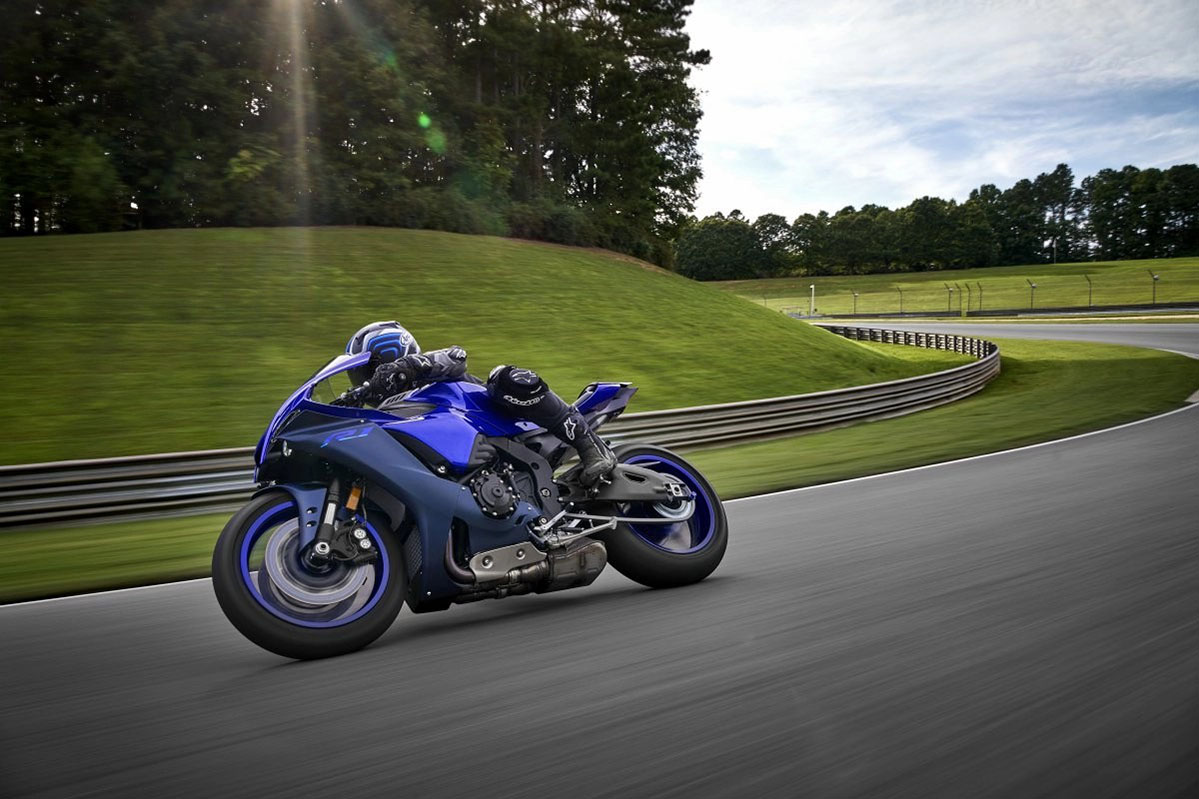
The rear tires hook better to the tarmacs this way and help tractions become more predictable (not to mention, the engine sound is incredible and sharp, unlike other 4-cylinder engines). When combined with an impressive horsepower of 200 HP, they allow the bike to race to 168 MPH with zero difficulties!
Progressive Brake Control System
Yamaha has parted ways with Brembo brands to adopt Nissin aggressive braking systems and calipers. The 220 mm rear and 320 mm twin front discs are incredibly powerful, supported by the revised padding materials to deliver fade-free operation and unbelievable lever control.
Even better, the brake line is brushed with steel braiding for extra stability and rider confidence. As the compact ABS unit is slotted in, we are delighted to discover two settings: BC2 and BC1. BC1 is the best bet for racing track modes, while BC2 offers more intervention. Learn to use/combine them the right way to ace every competition!
Handling
Every quality bike introduces immense aids for electronic riders – but none offer the same permutations as those on R1 Yamaha. A closer look reveals:
- 4-slide control setting
- 4-wheelie control setting
- 3 settings for launch control
- 3 settings for quick shifters
- 10 settings for traction control
And have we mentioned four modes for engine power, two modes for ABS, and three levels for engine braking?
Only extremely sensitive riders will dial all of them to settle into their personal preferences. Nevertheless, regardless of your riding style, be confident that there will always be a perfect setting out there, ready to be activated and unleash your competitive spirit!
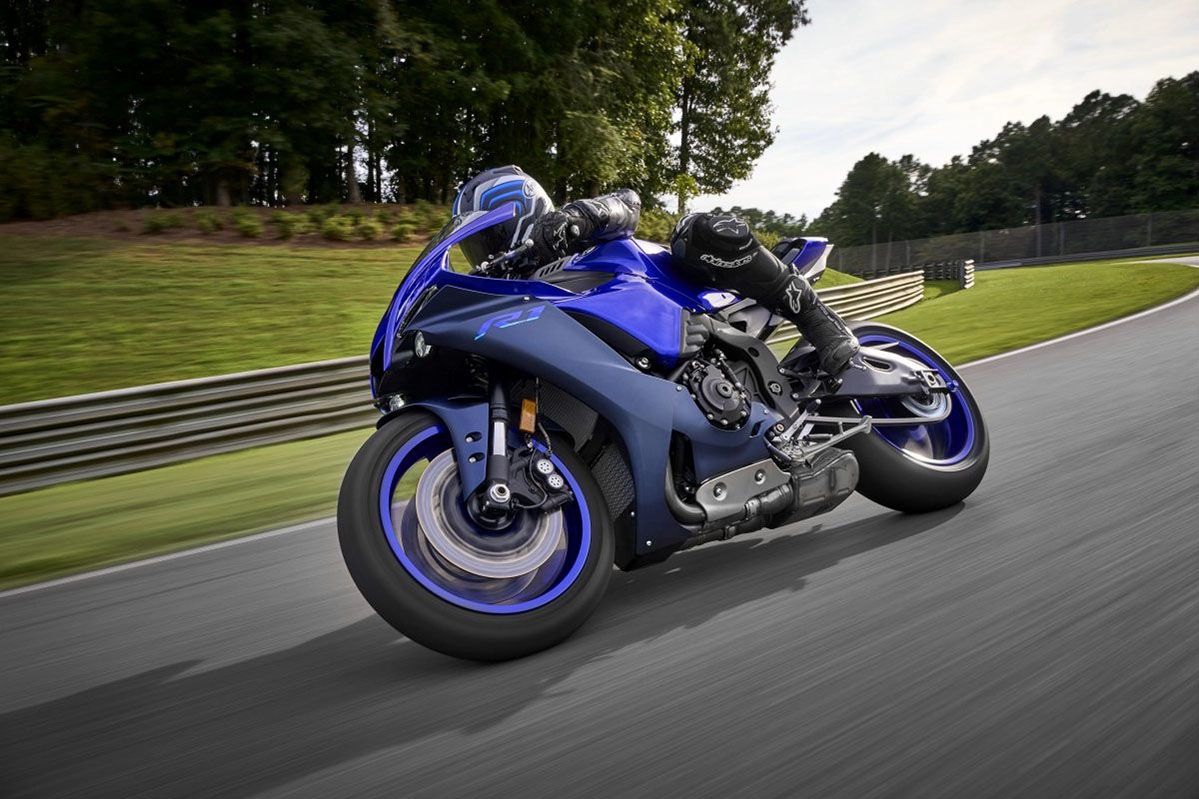
On another note, it’s not an exaggeration to claim that ultimate performance is the biggest goal of the Yamaha R1. Every feature – both old and new – revolves solely around this objective, and riding positions are no exception.
More specifically, they require you to curl yourself a little into a ball when sitting; your wrists bear the entire weight, with legs bent double so deeply that your knees may start begging for mercy after three to four laps.
Worse, you must ensure proper muscle fitness to haul yourself around, maintaining perfect control during insane braking and acceleration. And let’s not start talking about cornering forces!
No wonder some riders need an entire week of body massage after just one track day on R1 – according to most recent rider feedback. But if you are fully fit for riding, this direct feeling and experience is worth it; trust us.
2023 YZF-R1: A Brief Review
Sure, R1 does not enjoy the linear torque or cache of some European competitors. Yet, it continues to dominate our list of favorite liter-class bikes (for track surfaces only; it’s a pain on regular street modes).
Indeed, very few sports bikes can catch up with R1’s heavenly-tuned firing order when it reaches maximum performance. To make things even better, Yamaha developers ensure optimal communication and responsiveness between the throttle valves and your right hand, boosting the excellent power output of R1’s crossplane crankshaft engine to a new level.
And though Yamaha brochures never mentioned this, the fuel mappings (particularly in Power Mode 1 & 2, the most powerful and immediate settings) are smoother than any Yamaha model we have ever ridden, past R1 versions counted. What a deal!
Hence, despite its impressive power delivery, 2023 YZF-R1 feels manageable most of the time – assuming you are top-level riders, of course. R1 is not (and will never be) a beginner-friendly option.
2023 Yamaha YZF-R1 Photos & Videos
Photos
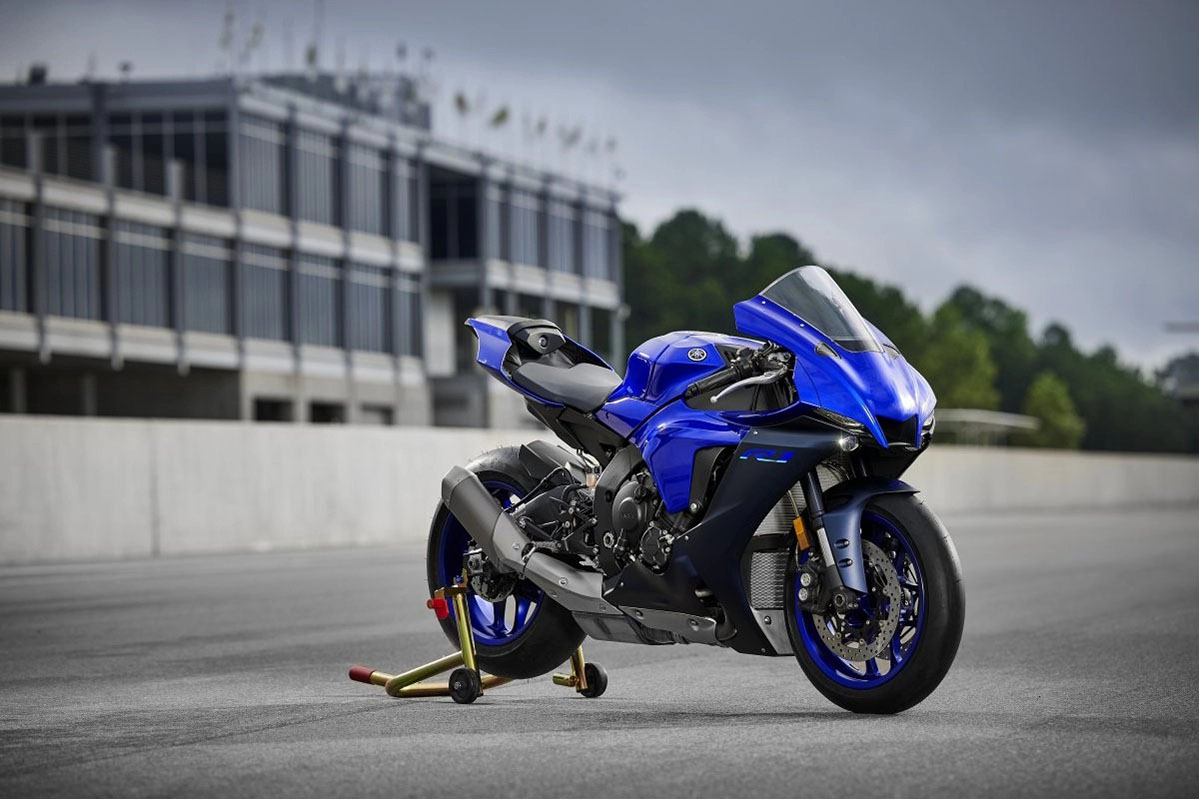
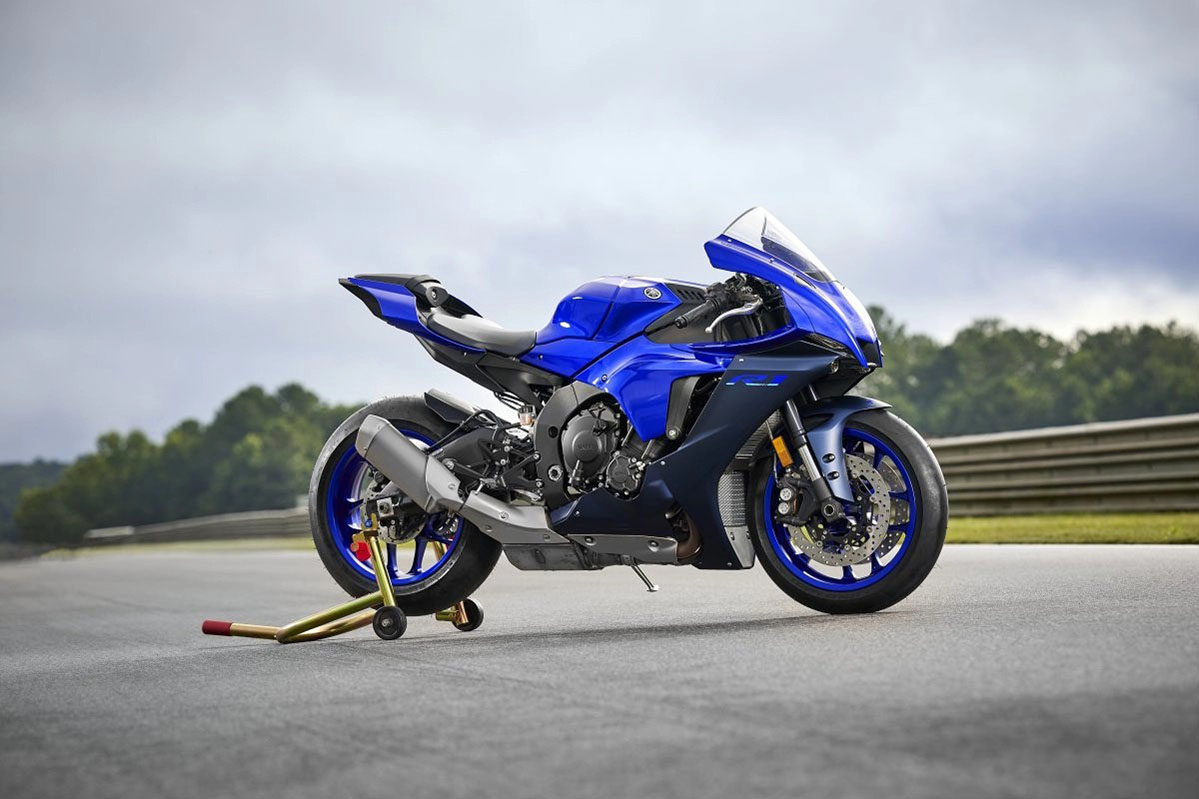
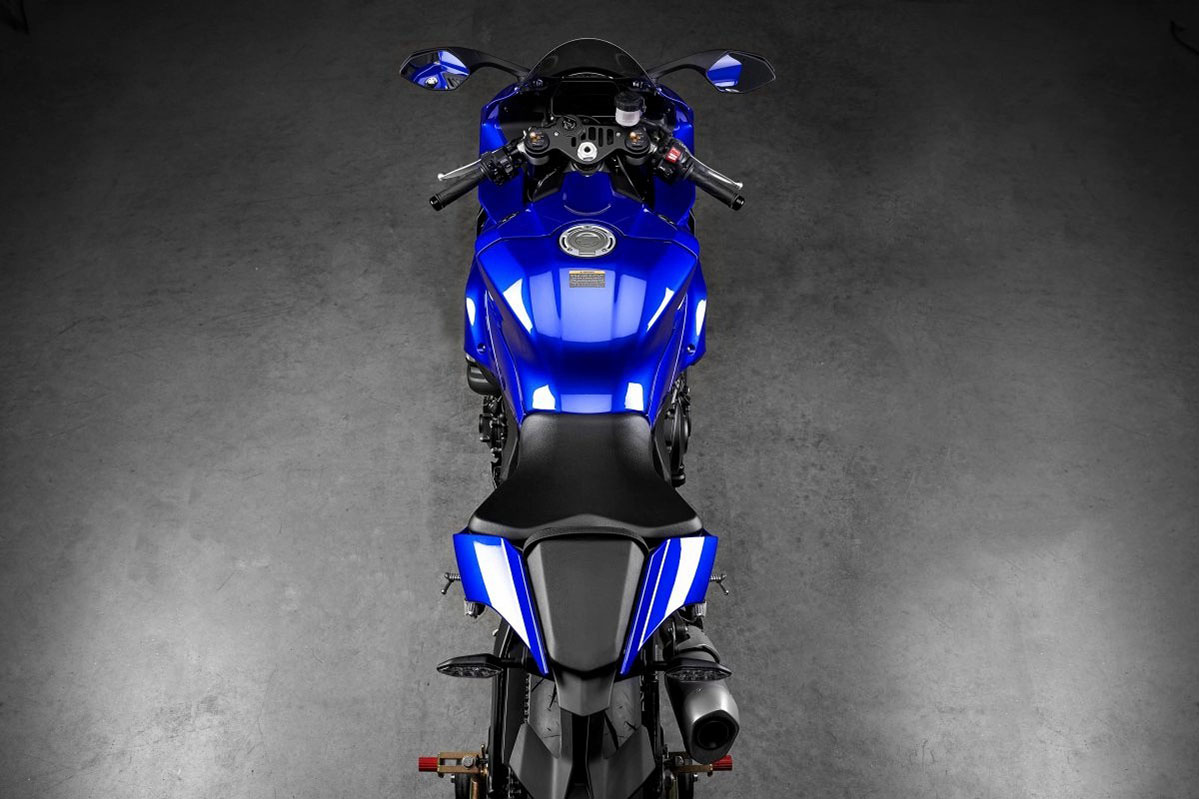
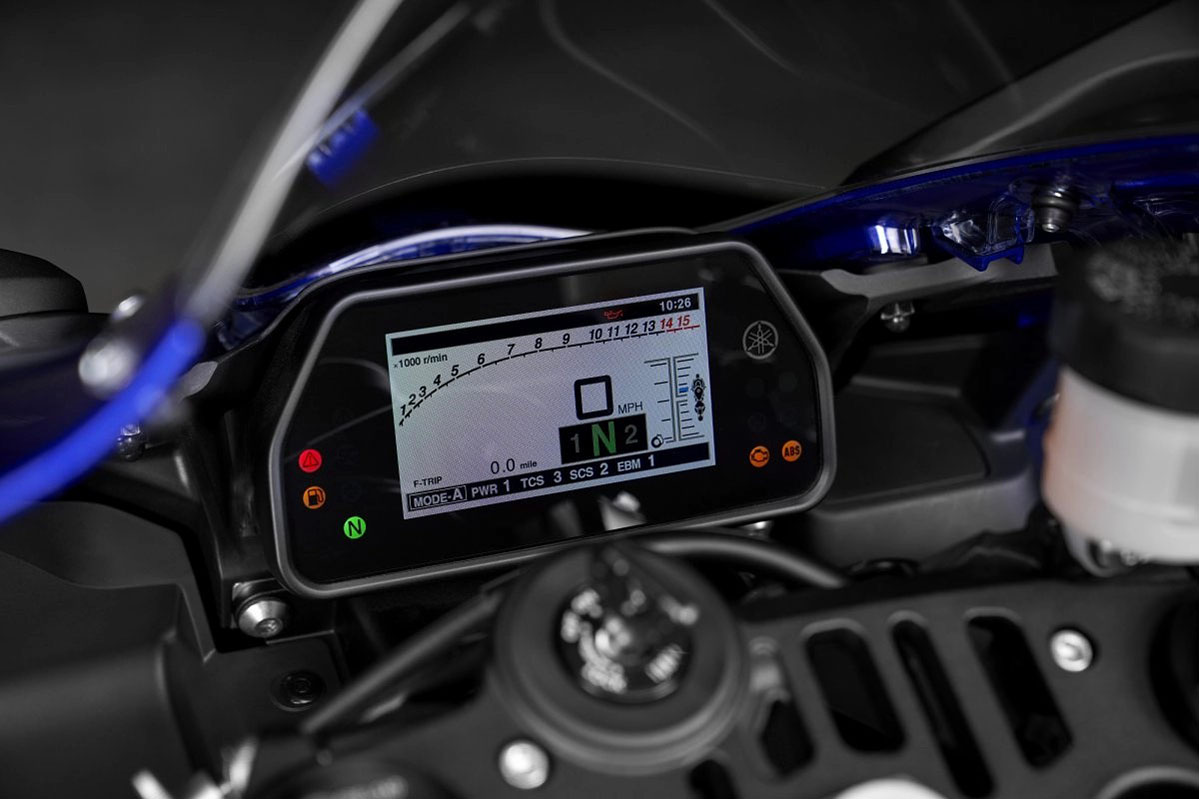
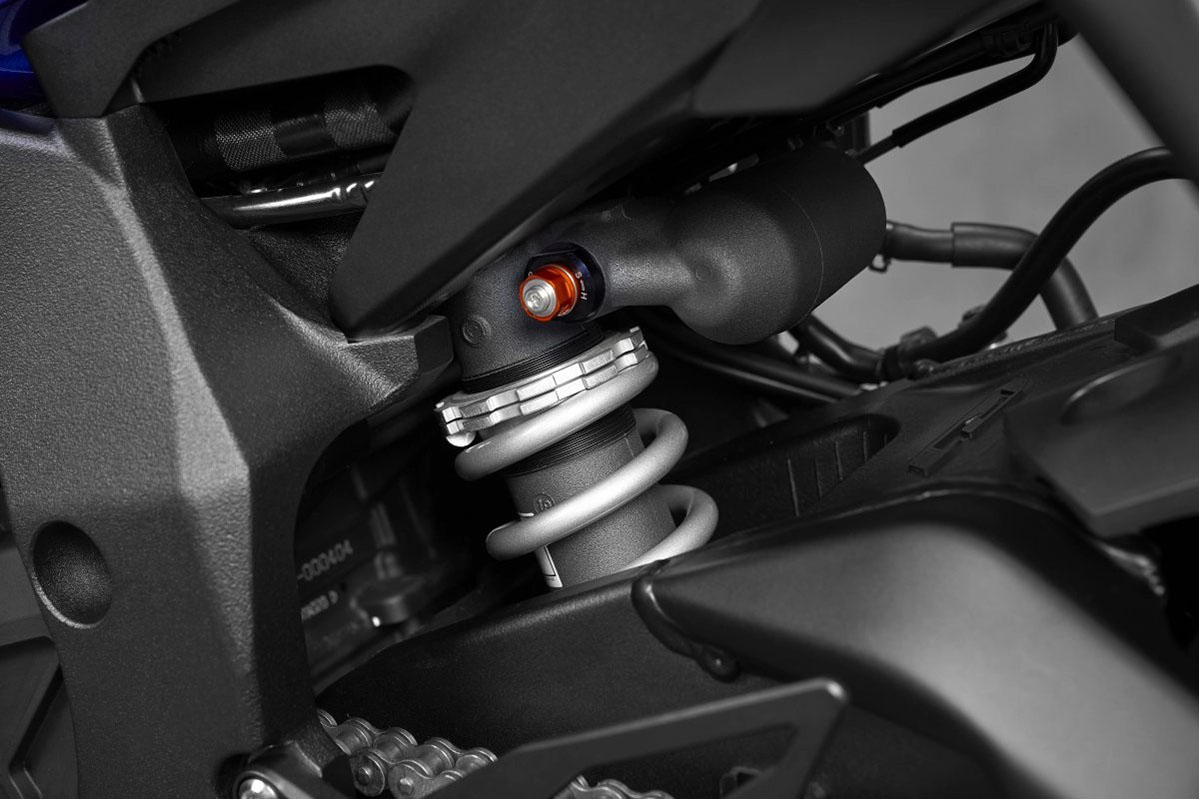
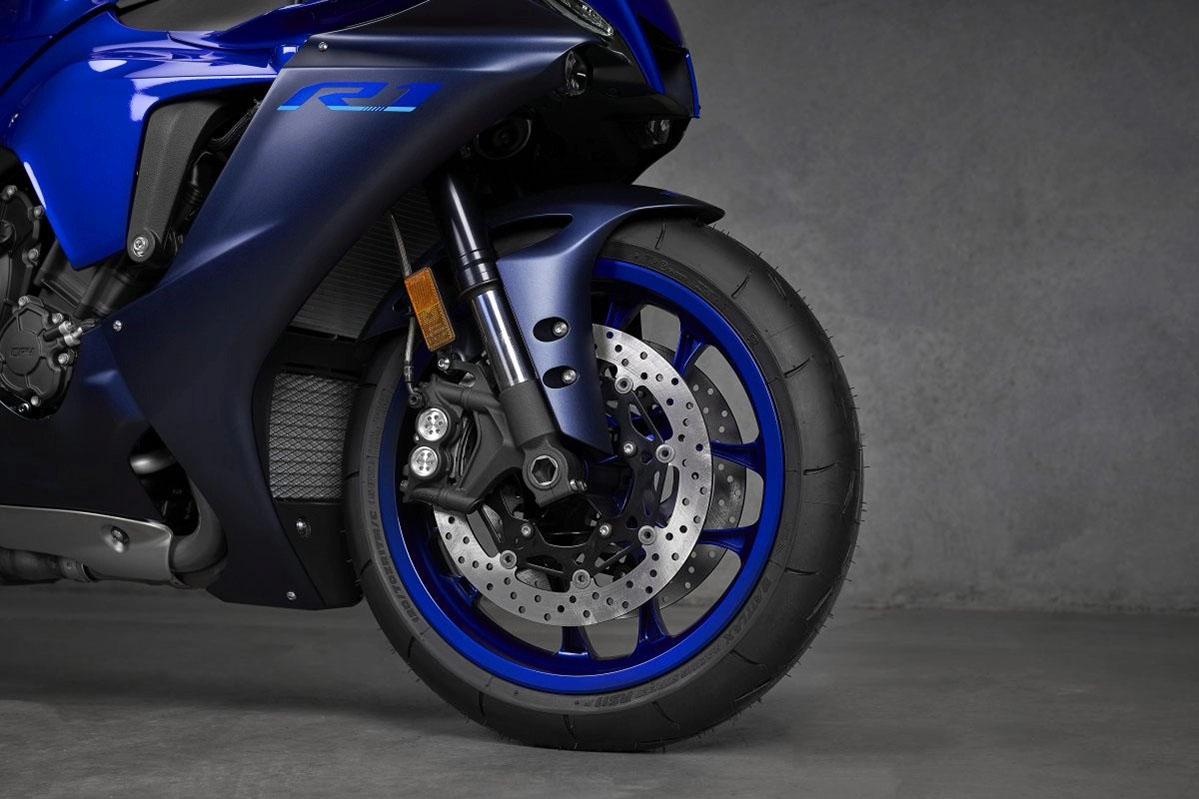
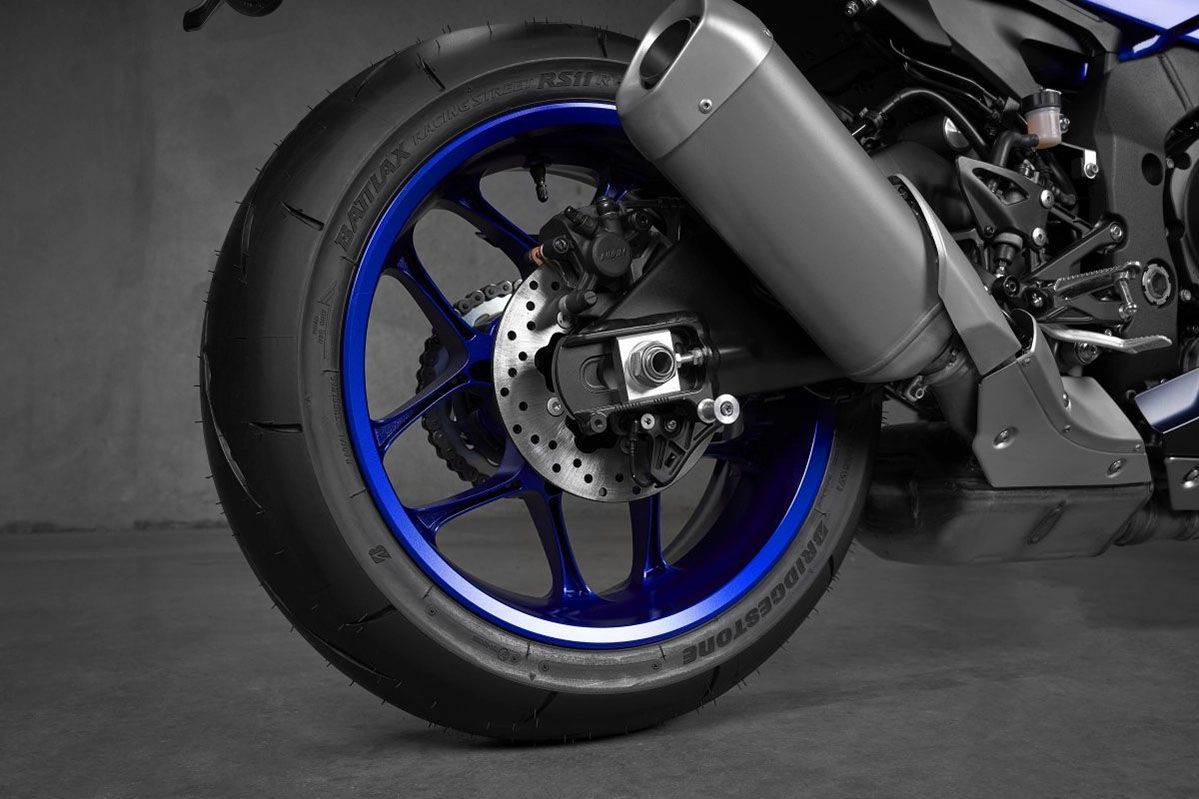
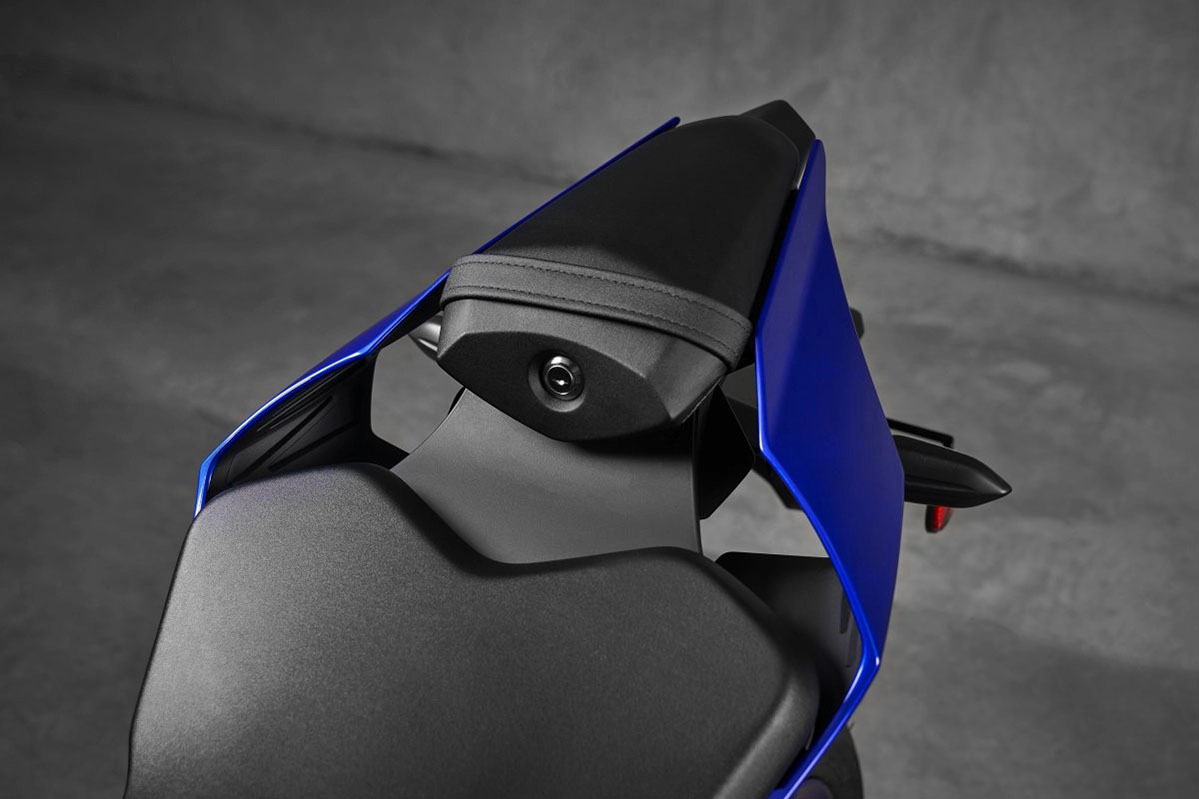
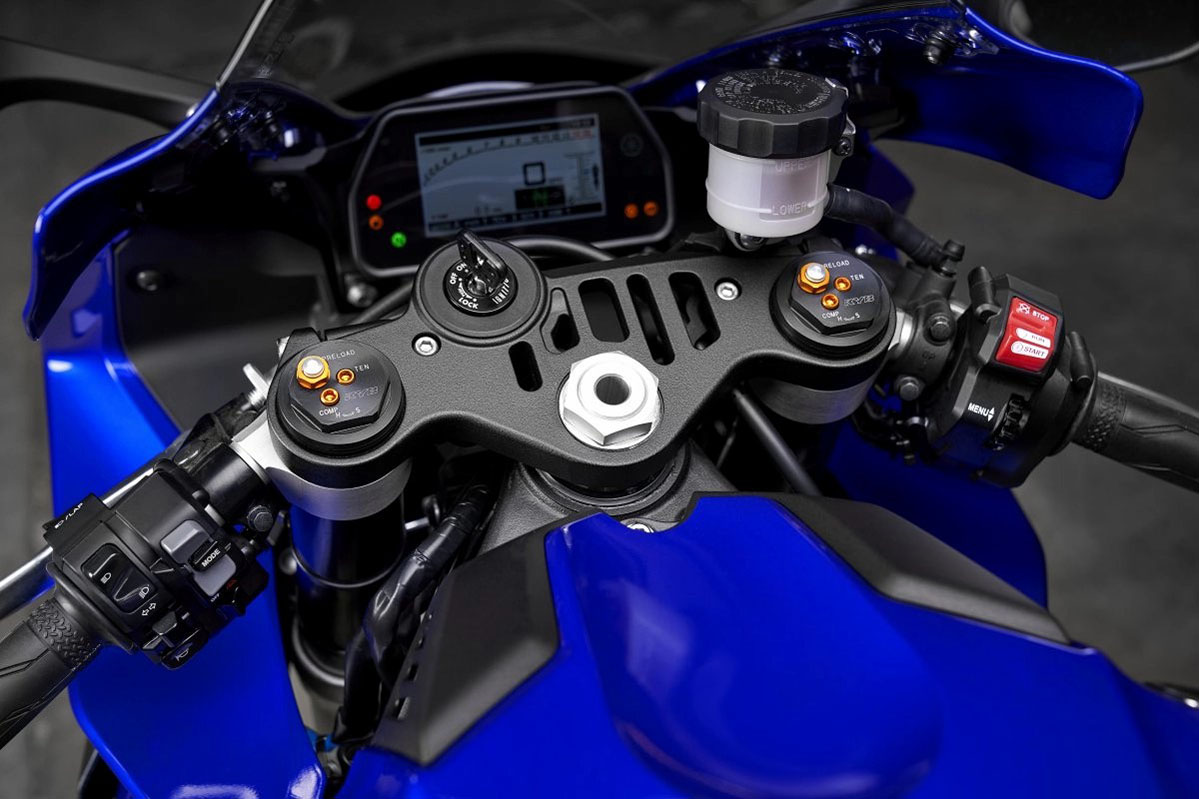
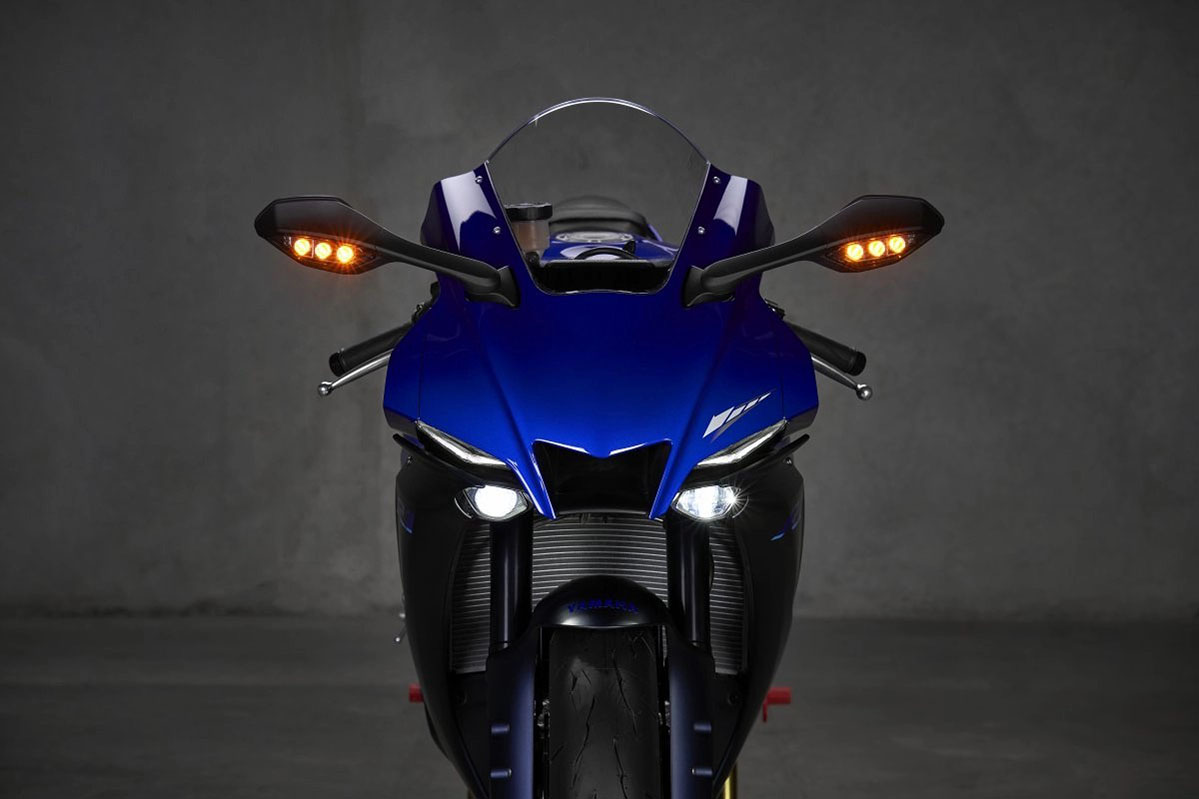
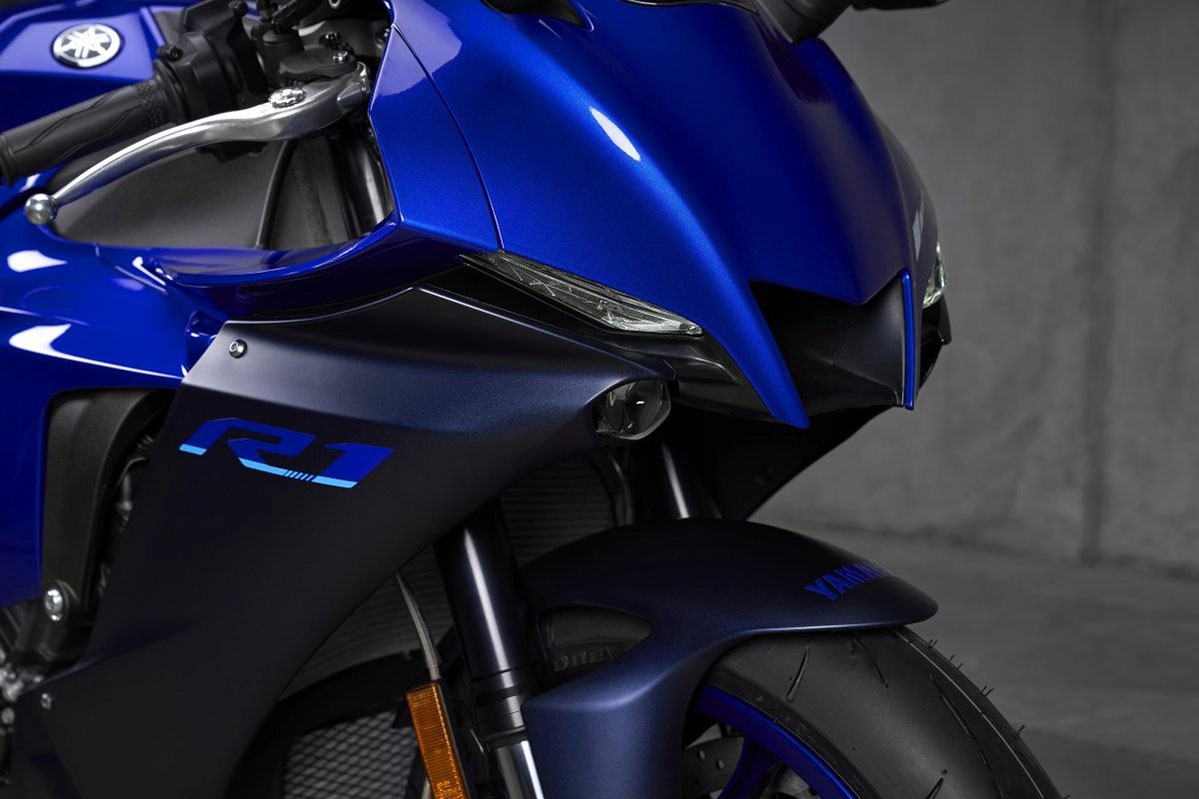
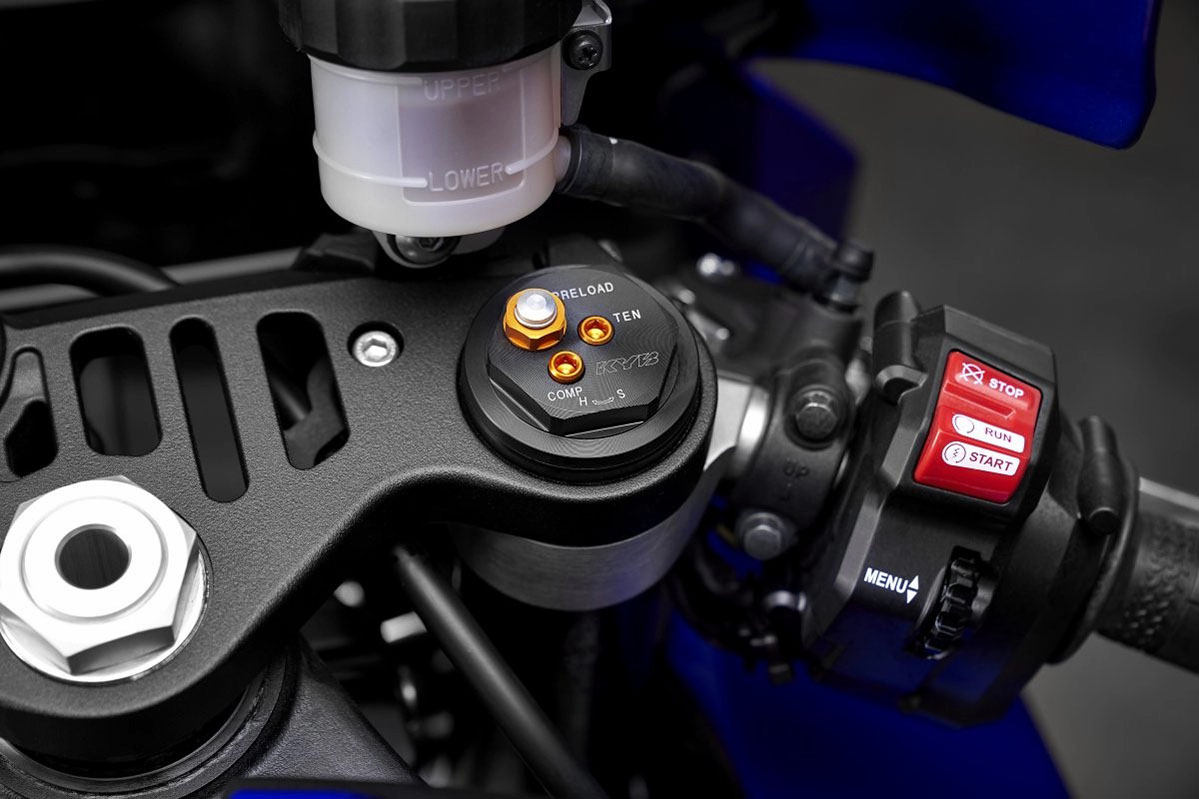
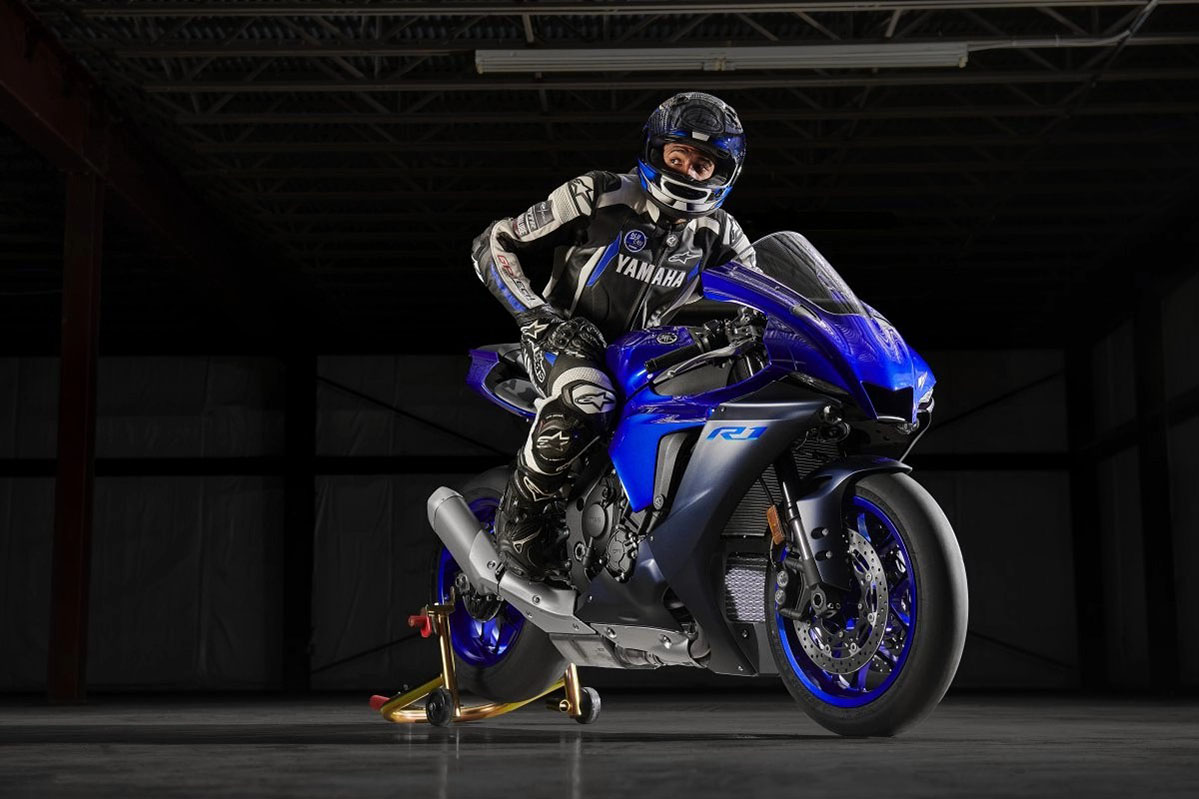
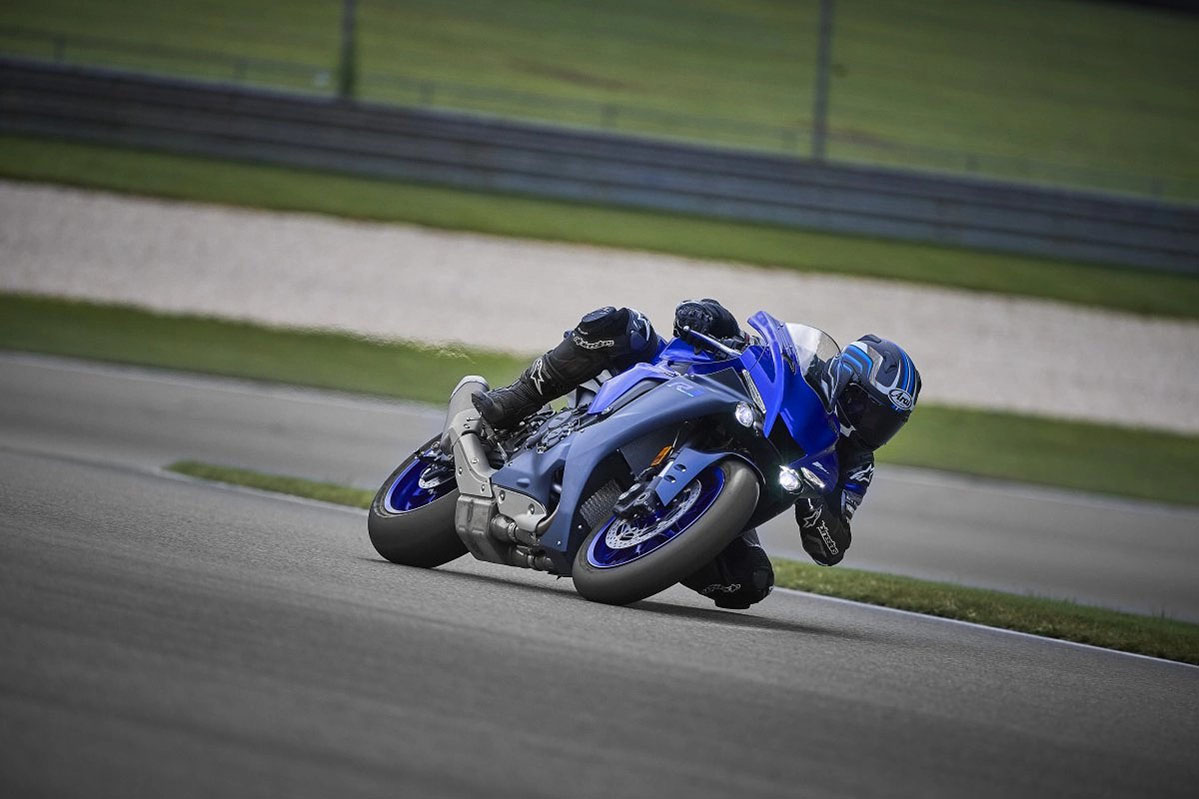
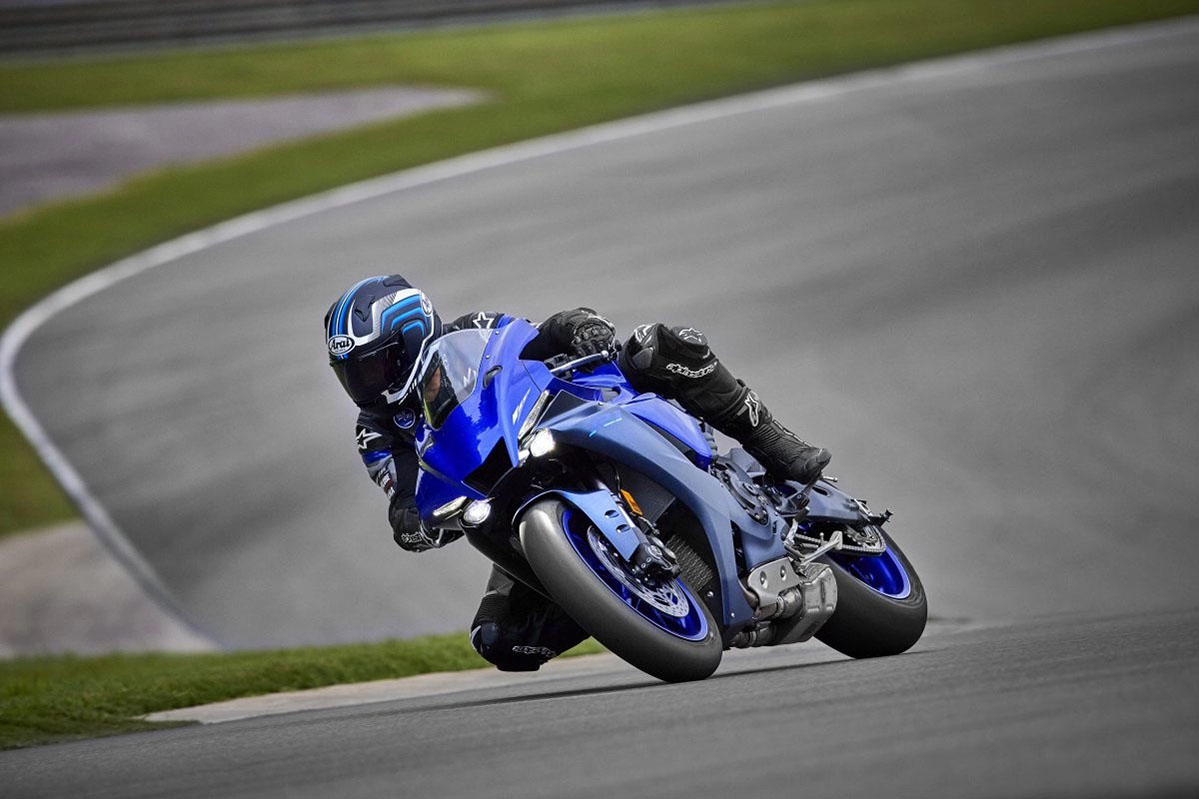
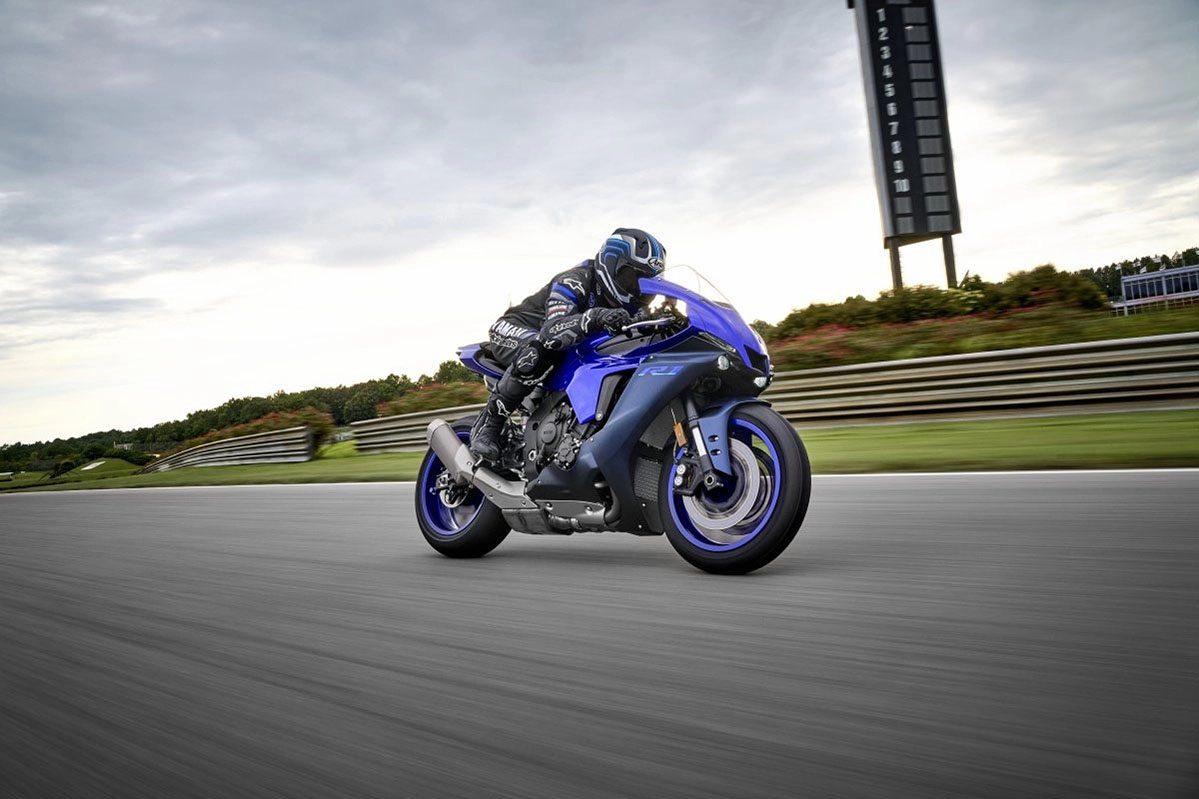
Videos
Reference Sources:
*Disclaimer: The prices mentioned in this article may vary depending on the dealership and location. Additionally, the specifications mentioned, such as horsepower and top speed, may vary from different sources as they are often tested under different conditions.

